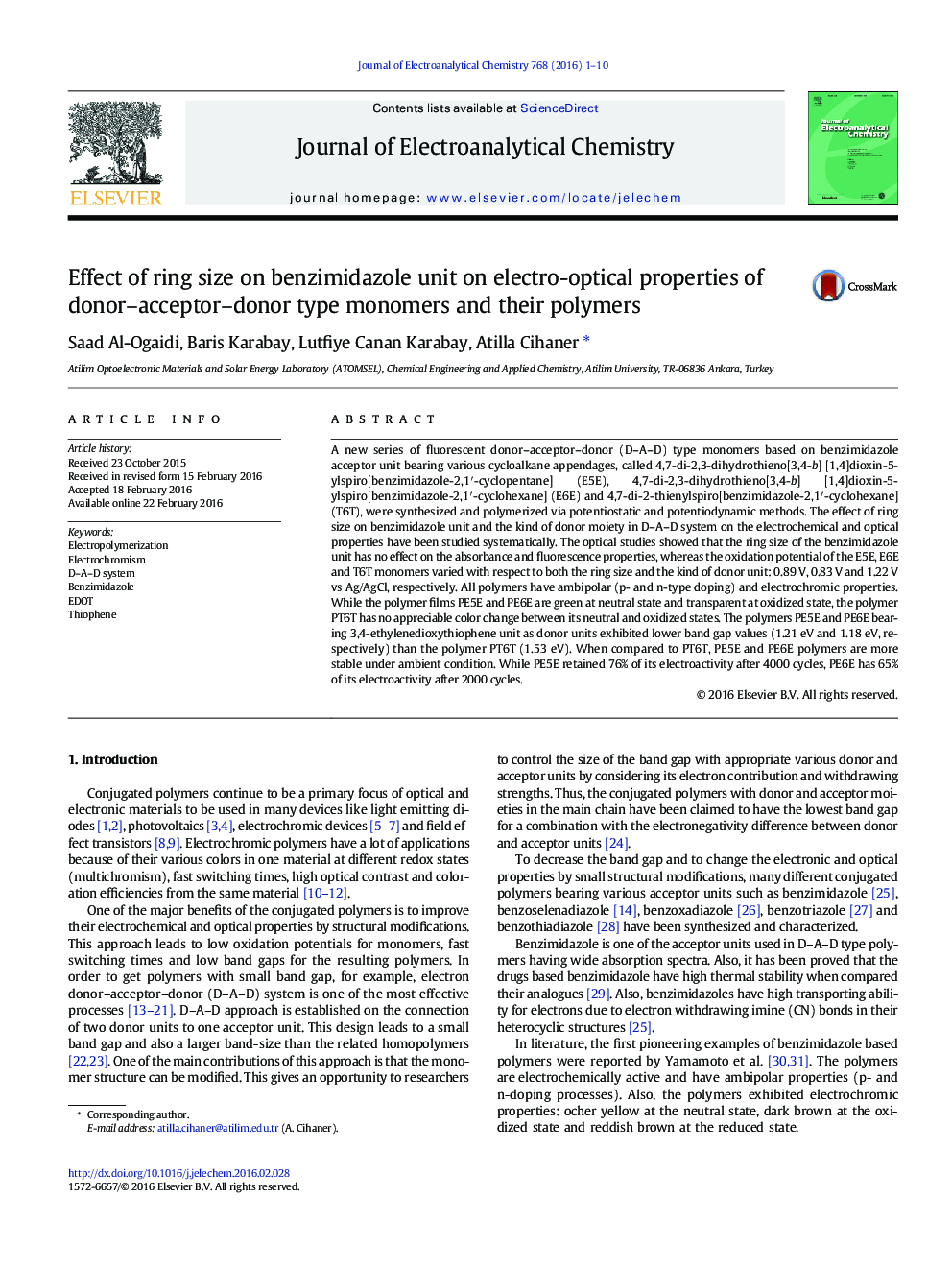| کد مقاله | کد نشریه | سال انتشار | مقاله انگلیسی | نسخه تمام متن |
|---|---|---|---|---|
| 217956 | 463176 | 2016 | 10 صفحه PDF | دانلود رایگان |
• A new series of benzimidazole based monomers were synthesized and polymerized.
• The effect of ring size on benzimidazole unit has been studied systematically.
• All polymers have ambipolar (p- and n-type doping) and electrochromic properties.
A new series of fluorescent donor–acceptor–donor (D–A–D) type monomers based on benzimidazole acceptor unit bearing various cycloalkane appendages, called 4,7-di-2,3-dihydrothieno[3,4-b] [1,4]dioxin-5-ylspiro[benzimidazole-2,1′-cyclopentane] (E5E), 4,7-di-2,3-dihydrothieno[3,4-b] [1,4]dioxin-5-ylspiro[benzimidazole-2,1′-cyclohexane] (E6E) and 4,7-di-2-thienylspiro[benzimidazole-2,1′-cyclohexane] (T6T), were synthesized and polymerized via potentiostatic and potentiodynamic methods. The effect of ring size on benzimidazole unit and the kind of donor moiety in D–A–D system on the electrochemical and optical properties have been studied systematically. The optical studies showed that the ring size of the benzimidazole unit has no effect on the absorbance and fluorescence properties, whereas the oxidation potential of the E5E, E6E and T6T monomers varied with respect to both the ring size and the kind of donor unit: 0.89 V, 0.83 V and 1.22 V vs Ag/AgCl, respectively. All polymers have ambipolar (p- and n-type doping) and electrochromic properties. While the polymer films PE5E and PE6E are green at neutral state and transparent at oxidized state, the polymer PT6T has no appreciable color change between its neutral and oxidized states. The polymers PE5E and PE6E bearing 3,4-ethylenedioxythiophene unit as donor units exhibited lower band gap values (1.21 eV and 1.18 eV, respectively) than the polymer PT6T (1.53 eV). When compared to PT6T, PE5E and PE6E polymers are more stable under ambient condition. While PE5E retained 76% of its electroactivity after 4000 cycles, PE6E has 65% of its electroactivity after 2000 cycles.
Figure optionsDownload as PowerPoint slide
Journal: Journal of Electroanalytical Chemistry - Volume 768, 1 May 2016, Pages 1–10
